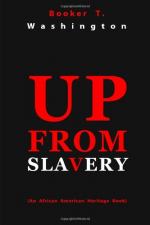Miss Davidson and I began consulting as to the future of the school from the first. The students were making progress in learning books and in development their minds; but it became apparent at once that, if we were to make any permanent impression upon those who had come to us for training we must do something besides teach them mere books. The students had come from homes where they had had no opportunities for lessons which would teach them how to care for their bodies. With few exceptions, the homes in Tuskegee in which the students boarded were but little improvement upon those from which they had come. We wanted to teach the students how to bathe; how to care for their teeth and clothing. We wanted to teach them what to eat, and how to eat it properly, and how to care for their rooms. Aside from this, we wanted to give them such a practical knowledge of some one industry, together with the spirit of industry, thrift, and economy, that they would be sure of knowing how to make a living after they had left us. We wanted to teach them to study actual things instead of mere books alone.
We found that the most of our students came from the country districts, where agriculture in some form or other was the main dependence of the people. We learned that about eighty-five per cent of the coloured people in the Gulf states depended upon agriculture for their living. Since this was true, we wanted to be careful not to education our students out of sympathy with agricultural life, so that they would be attracted from the country to the cities, and yield to the temptation of trying to live by their wits. We wanted to give them such an education as would fit a large proportion of them to be teachers, and at the same time cause them to return to the plantation districts and show the people there how to put new energy and new ideas into farming, as well as into the intellectual and moral and religious life of the people.
All these ideas and needs crowded themselves upon us with a seriousness that seemed well-night overwhelming. What were we to do? We had only the little old shanty and the abandoned church which the good coloured people of the town of Tuskegee had kindly loaned us for the accommodation of the classes. The number of students was increasing daily. The more we saw of them, and the more we travelled through the country districts, the more we saw that our efforts were reaching, to only a partial degree, the actual needs of the people whom we wanted to lift up through the medium of the students whom we should education and send out as leaders.
The more we talked with the students, who were then coming to us from several parts of the state, the more we found that the chief ambition among a large proportion of them was to get an education so that they would not have to work any longer with their hands.
This is illustrated by a story told of a coloured man in Alabama, who, one hot day in July, while he was at work in a cotton-field, suddenly stopped, and, looking toward the skies, said: “O Lawd, de cottom am so grassy, de work am so hard, and the sun am so hot dat I b’lieve dis darky am called to preach!”




